There are some many Places to Visit in Cusco that you can’t count them all. Visit ancient human settlements that jealously guard the secrets of ancestral cultures which are thousands of years old; and see living villages that thrive as they still celebrate their grand authentic Andean traditions. On your trip to South America don’t forget to explore the Best Tourist Attractions in Cusco. If you leave Peru, without exploring Cusco, the Sacred Valley and Machu Picchu, you will certainly regret it. So, we invite to you to discover the absolutely best destinations that Peru has to offer.
You will find fantastic Tourist Attractions in Cuzco, and spectacular Incan ruins and archeological sites, mystical natural formations and incredibly beautiful landscapes. Also, you will explore great Incan temples, extraordinary convents from colonial times, very interesting museums, palaces that the Incas built, excellent medicinal hot springs, and villages. As a result, all this was had honored the traditional way for thousands of years.
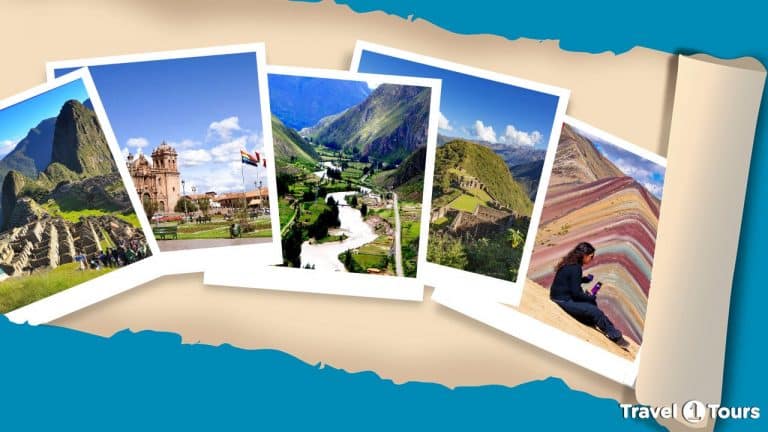
Archeological parks of Cusco
Cusco has 10 distinct Archeological Parks; these are the Top Attractions in Cusco, Cuzco has more archeological parks than any other place in South America. In fact, these parks are open to visitors every day, and they serve the function of conserving, exploring, and communicating advances in the study of the Incan and pre-Incan cultures.
Machu Picchu Archeological Park
This is the masterwork of Incan engineering and construction. Due to its unique architectural characteristics and its incredibly scenic location, Machu Picchu has become one of the top places to visit in Cusco and the most popular tourist destination on the planet earth. Without doubt this dream citadel is clearly divided into two principle zones: the agricultural zone which is composed of the numerous agricultural terraces on the south side; and the urban zone where the inhabitants lived and carried out their civic and religious activities. Together they form this wonder of the modern world which is certainly one of the most Sacred Places that the Incas built. Within this archeological complex you can climp up either Huayna Picchu Mountain or Machu Picchu Mountain.
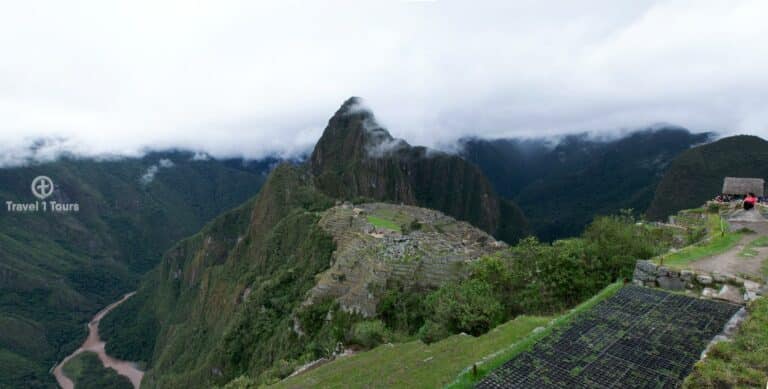
- Location of Machu Picchu: It is located 110 km. to the northeast of Cusco, it is in the district of Machu Picchu, and in the province of Urubamba.
- The complex is open 7 days a week from 6:00 am until 5:30 pm.
In order to explore this incredible and majestic tourist destination, we recommend that you book our all-inclusive Machu Picchu 1 day tour.
Choquequirao Archeological Park
This archeological complex is located near Salkantay Mountain (3300 masl.), this Incan citadel is comprised of buildings, temples, and terraces which are spread out over different levels and sectors. The site is partially excavated, and it is a very popular alternative with lovers of trekking.
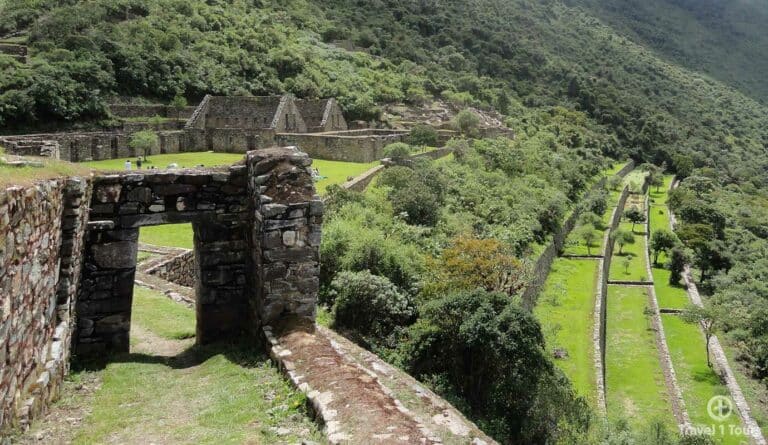
- Location of Choquequirao: These Inca ruins are located 210 km. to the northeast of Cusco. They are in the district of Santa Teresa, in the province of La Convencion.
- Choquequirao is open 7 days a week from 7:00 am until 5:00 pm.
Sacsayhuaman Archeological Park
Sacsayhuaman is one of the most popular Places to Visit in Cusco Peru. Don’t miss exploring this fantastic place which is close to Cusco and which makes travelers feel in awe. Walking to the principal part of the complex is comfortable because it is just to the northeast of the city of Cusco.
Sacsayhuamán Archeological Center
This is the greatest ceremonial fortress of the Incas and was constructed during the reigns of Pachacutec and Huayna Capac. It is built of megalithic stones bigger than a truck and is composed of platforms, towers, doors, terraces, reservoirs, temples, and an immense expanse where Inti Raymi is celebrated every June 24. Because it is so close to Cusco, it is one of the Best Places to Visit. In my opinion the view from the top is specially amazing and well worth checking out.
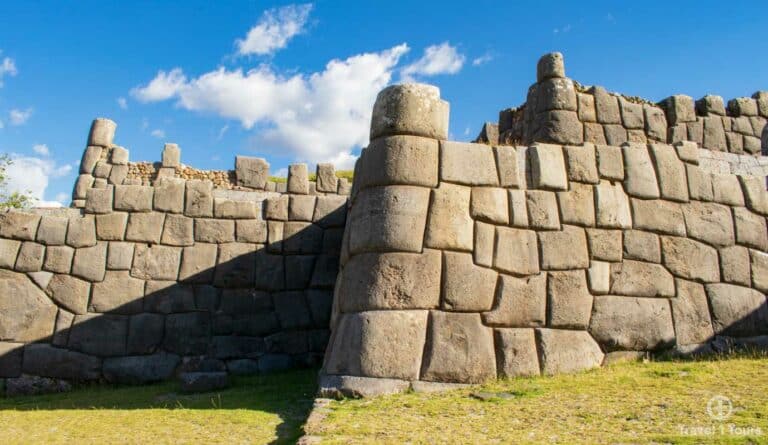
- Location of Sacsahuaman: 3 km. northeast of Cusco
- It is open everyday from 7:00 am until 5:30 pm.
Qenqo Archeological Complex
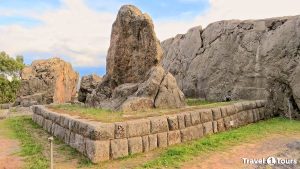
It is located 4 km. northeast of the city of Cusco and it has two parts: Upper Qenqo and lower Qenqo. Etymology: the name signifies zig-zag or labyrinthe. It is thought to have had mainly a religious function. On the outside there is a semi-circular amphitheatre with trapizoidal niches and a puma-shaped monolith that measures about 6 meters.
- Location of Qenco: it is located 4 km. to the northeast of Cusco.
- Is open everyday from 7:00 am until 5:00 pm.
Puca Pucara Archeological Complex
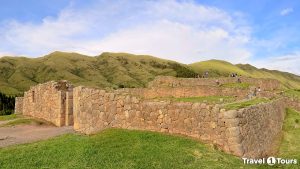
Puca Pucara was a military construction near Cusco. There are great walls, terraces, and pathways. During Incan times it functioned as a gateway into Cusco and as a defensive battlement. The name in Quechua means Red Fort. This is because of the color that rocks take on during twilight.
- Location of Puca Pucara: 8.4 km. to the northeast of Cusco.
- It is open everyday from 7:00 am. until 5:00 pm.
Tambomachay Archeological Complex
A temple dedicated to the deities of water. It was used as a place where the Incan elite could go and relax and be comfortable. This spot is also known as the Bath of the Inca. Therefore, the complex has 3 main terraces, a series of aqueducts, canals, fountains, and an immense wall which completely encircles the site on the high side.
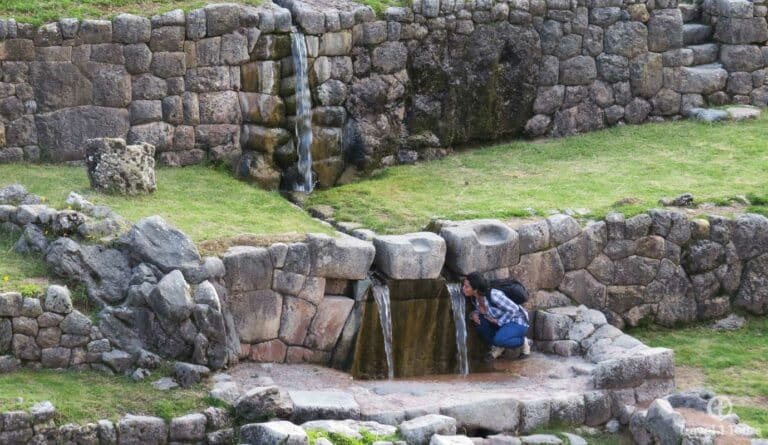
- Location of Tambomachay: 8.7 km. to the northeast of Cusco.
- It is open everyday from 7:00 am. until 5:30 pm.
Our Cusco City Tours is the best way to begin exploring the ancient Incan Capital and the oldest city in South America. So, this is one of the most important places to visit in Cusco.
Ollantaytambo Archeological Park
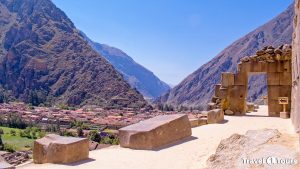
This is one of the few towns which still maintains its original Incan layout. This archeological complex is the most important one in the Sacred Valley. We know that it had various functions such as: astronomical center, administrative center, urban center, agricultural center, and livestock raising center. It plays an important role in the dramas passed down to us in Incan literature. The town is named after the legendary figure, Ollantay.
- Location of Tambomachay: 72 km. to the northeast of the city of Cusco. It is in the district of Ollantaytambo, and in the province of Urubamba (Sacred Valleys of the Incas).
- It is open 7 days a week from 7:00 am. until 5:30 pm.
Pisac Archeological Park

This park is located in the province of Calca, and in the district of Pisac. It contains an area of 9063 hectares. Pisac was a royal hacienda, and it was named after a bird, the partridge, that lives in the area. The main part of the complex is comprised of various sectors, among them is the neighborhood where the nobility lived, and the Intihuatana. Other notable constructions are the towers or lookouts and there is a magnificent series of steep terraces.
- Location of Pisac: 40 km. to the northeast of the city of Cusco, in the district of Pisac, and in the province of Urubamba (Sacred Valley of the Incas).
- The site is open every day from 7:00 am. until 5:30 pm.
Moray Archeological Park
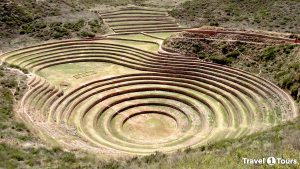
These agricultural terraces served as an agricultural laboratory where the Incas could experiment in adapting plants to differing elevations, that is, to different climatic zones. The set-up off the terraces produces 20 different micro-climates. The highest temperatures are at the lowest levels and the temperatures gradually decrease as the terraces ascend.
- Location of Moray: 47.5 km. to the northeast of the city of Cusco. It is in the district of Maras in the province of Urubamba.
- The site is open 7 days a week from 7 am. until 5:30 pm.
Tipón Archeological Park
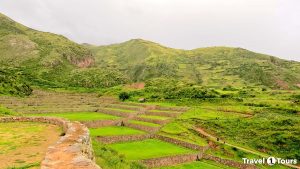
Tipon is one of the royal gardens that Wiracocha ordered built. The site consists of 12 terraces which are flanked by walls of polished stone. The terraces are colorful and enormous. The canals and the fountains are a work of beauty, as are the views from the higher levels of Tipon. The flora is very interesting here, and you can see the vast amount of hydraulic engineering that the Incan builders employed. The cult of water was very important here in Tipon where water was worshipped. We recommend that you make a journey to Tipon. It will be a wonderful trip.
- Location of Tipon: 27.7 km. to the southeast of the city of Cusco. It is in the district of Oropesa in the province of Quispicanchis. (While you are travelling to Tipon, you should go to the next town which is Oropesa where the local people make biggest traditional bread in the world. It is called Pan Chuta).
- The site is open 7 days a week from 7:00 am. until 5:30 pm.
Chinchero Archeological Park

This is one of the most important archeological sites in the Cusco area. Here you can discover fine Imperial era Incan stonework such as was used in the terraces, the retaining walls, and the temples. On top of the Incan walls, in order to show their domination, the Spanish built their Colonial Church. The Chinchero market is famous for its exquisitely made textiles and its traditional food. Here in Chinchero you will find the best weavers in all of South America.
- Location of Chinchero: 28.5 km. to the northeast of Cusco. It is in the district of Chinchero in the province of Urubamba. (During dry season sometimes at night the Constellation Pleiades and the Star Sirius are very easy to see. The Incas used the location of these heavenly bodies to determine the time when their crops should be planted).
- The site is open 7 days a week from 7:00 am. until 5:30 pm.
Raqchi Archeological Park
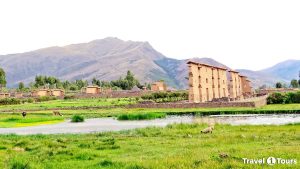
This is the site of a great Incan temple made out stone and mud (adobe). The temple was dedicated to Wiracocha. There are lots of storehouses, water fountains, and enclosures.
- Location of Raqchi: 120 km. to the southeast of Cusco. It is in the district of San Pedro, in the province of Canchis.
- The site is open 7 days a week from 7:00 am. until 5:30 pm.
Piquillacta Archeological Park
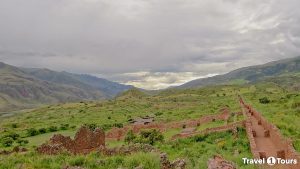
This complex was built by the Wari culture. It served as a military, urban, and agricultural center. It is north of the Huacarpay Lagoon.
- Location of Piquillacta: 49.7 km to the southeast of Cusco. It is in the district of Lucre, in the province of Quispicanchis.
- The site is open 7 days a week from 7:00 am. until 5:30 pm.
The Tourist Sites of Cusco
What other Places Should I visit when I come to Cusco? Besides the aforementioned archeological sites, the Cusco region has many more very interesting Tourist Sites. These are some of the Best Places to Visit in Cusco Peru.
Plaza de Armas of Cusco
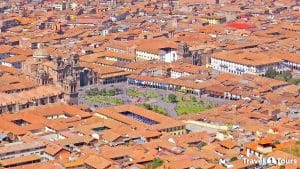
This is the nucleus of the Cosmopolitan City of Cusco. It is surrounded by temples and colonial arches. There are tourist restaurants, jewelry stores, travel agencies, and specialty stores for the tourist. It is located right in the center of Cusco, and is the place where many of the most important traditional holidays are celebrated: Santuranticuy, Corpus Christi, Semana Santa (Holy Week), Fiestas Patrias (Peruvian Independence Days), Fiestas Jubilares del Cusco (Cusco Days), Año Nuevo (New Year’s Eve).
- Location of Plaza de Armas Cusco: in the center of Cusco’s historical district.
- Time when you can visit: 24 hours a day.
Twelve-Angled Stone
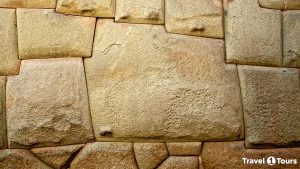
This is a stone block which is set in the wall of the Palace of Inca Sinchi Roca. Above this ancient Palace, the present day Palace of the Archbishop was built. This stone is one of the treasures of Cusco and it has 12 angles (corners) that are perfectly cut into it so that the stone fits like a jewel in a setting. Observe the way that the twelve-angled stone fits in perfect harmony with the other rocks in this fantastic Incan wall. Travelers love to have their picture taken in front of the twelve-angled stone.
- Location: one block off the Plaza de Armas down Calle Hatum Rumiyoc. (“Calle” means “street”).
- Time when you can visit: all day long.
Incan City of Patallacta
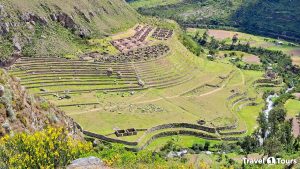
This site is located on the left bank of the Urubamba River at Km. 82 which is the starting point of the Classic Inca Trail Trek. This Incan urban center is made up of 112 houses that are built of rocks held together with mud mortar. The town is divided into various sectors which are connected by stairways and paths. The ceremonial zone is called Pulpituyoc.
- Location of Patallacta: 82 km. to the northeast of Cusco. It is in the district of Machu Picchu, in the province of La Convención.
- The site is open 7 days a week from 8:00 am. until 5:00 pm.
Kanamarca Archeological Complex
This is a site of the pre-Inca tribe, the K’anas. They built these circular and square buildings and enclosures out of stone and mud. Actually, the place is most famous for being the site of the K’anamarca dances.
- Location of Kanamarca: in the district of Alto Pichigua, in the province of Espinar.
- Hours when the site is open: all day long.
Huamanmarca Archeological Center
This was an Incan religious and administrative complex which was built during the reign of Inca Yupanqui. There are many doors with double jambs and Incan structures with pyramidal form. This signifies that the site was used to celebrate important religious feasts. Actually, every June the traditional festival of Huamanmarca Raymi is celebrated here.
- Location of Huamanmarca: In the district of Huayopata, in the province of La Convención.
- Hours when the site is open: 8:00 am – 5:00 pm.
Inca Trail to Machu Picchu
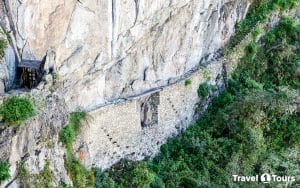
There are 2 important access routes to Machu Picchu. Both were part of the great Incan road system called the Qhapaq Ñan.
Today they have been converted into the most Famous Trekking Routes in Peru and in the whole world. The ancient Inca Trail to Machu Picchu ran along cliffs, crossed innumerable ravines full of glacial melt-water, and passed through all kinds of different climatic zones at different altitudes in the Andes Mountains and in the Eyebrow of the Jungle. The Classic Inca Trail is 43 kilometers long and it begins at Km. 82 of the railway line that runs from Cusco to Machu Picchu (Aguas Calientes). Along the route there are fantastic Inca Ruins Qoriwachayrachina, Patallaqta, Runkuraqay, Sayacmarca, Phuyupatamarca, Intipunku, Intipata and Wiñayhuayna.
The Short Inca Trail is 12 kilometers long. It begins at Km. 104 of the same railway line. The archeological centers that are visited along the route are Chachabamba and Wiñaywayna.
- Location of the Inca Trail: to the northeast of Cusco.
- Time when the Trail is open: early in the morning, but you are only allowed to enter the trail with a guide and you need the sponsorship of an Authorized Travel Agency.
Mauk’allaqta Archeological Complex
This is a very impressive pre-Incan city. It is situated on the bank of the Apurimac River and is composed of about 200 enclosures which are made of rocks and mud. The majority of these enclosures were burial crypts. Some are circular and some are rectangular. Without a doubt the most important tomb is the one that rises above the main plaza of the city. This is probably where the mummies of the rulers of the Qolla were placed. It is thought that Maukállaqta was the seat of government for the Qolla tribe before the Incan expansion.
- Location of Mauk’allaqta: 251 km. to the southeast of Cusco. In the district of Qoporaque, in the province of Espinar.
- It is open from 8:00 am. until 5:00 pm.
Espíritu Pampa Archeological Complex
This was originally a Wari site. It is located deep in the dense vegetation of the jungle in the northeast section of the Vilcabamba district. It was upon this site that the Incas probably built Vilcabamba. Also known as the Plain of the Spirits, this site covers an area of about 40 sq. km. It is composed of plazas, enclosures, and courts which are rectangular in shape. Most of them are colorful because they are painted inside and out.
- Location of Espiritupampa: 500 km. northeast of Cusco. It is in the district of Vilcabamba, in the province of La Convención.
- It is open from 8:00 am. until 5:00 pm.
Hanging Bridge of Q’eswachaka
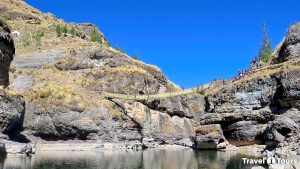
This is an Incan style hanging bridge made out of ichu grass. It is 28 meters long and 1.2 meters in width. It hangs above the roiling waters of the Apurimac River. There has been a bridge of this type at this location since Incan times. It is part of the Incan Qhapaq Ñan road system. This bridge is renewed and maintained every year. It is the last of this authentic style Incan bridges and is over 500 years old. The renovation is thus an ancestral rite. Every year the communities of Winch’iri, Chaupibanda, Ccollana, Quehue, and Perccaro get together and do the renovation work.
- Location of Q’eswachaka: 156 km. to the southeast of Cusco. It is in the district of Quehue, in the province of Canas.
- Hours that it is open: 24 hours. (All day and all night).
Salt Mines of Maras
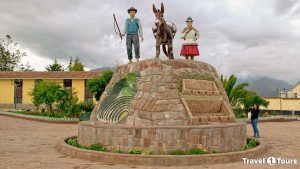
These salt mines are in the Maras district. Salt has been mined here since Incan times. During the colonial era of the viceroyalty, Maras mine was the first producer of salt in this part of the Andes. Today the extraction of salt is accomplished with the cooperation of both men and women from the communities of Maras and Pichingoto. They first block the flow of the water from a nearby spring that has a high concentration of salt. Then, they let the water in the blocked pool of salt water evaporate. This leaves behind a residue of salt. The salt is then collected and, depending on the quality, is used for human consumption, animal consumption, in the industry, or sold on the local marquet.
- Location of Salineras Salt Mines: 58 km. to the northeast of the city of Cusco. It is in the district of Maras, in the province of Urubamba.
- It is open from 8:00 am. until 3:00 pm.
Tarawasi Archeological Complex
This Incan construction was built upon the order of Inca Pacahacutec with the objective of making a rest stop on the walk to Chinchaysuyo (the eastern quarter of the Empire.). There is a great platform with walls made of worked stone. All the stones are joined together in typical Incan fashion in a work of beauty.
- Location of Tarawasi: in the district of Limatambo, in the province of Anta.
- It is open from 8:00 am. until 5:00 pm.
San Blas Neighborhood
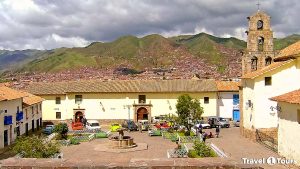
This is one of the oldest and most famous neighborhoods in Cusco. It is the oldest parish in Cusco and it has narrow lanes full of colonial buildings. Along its steep streets you will find shops featuring the paintings and pictures of the most popular artists and craftsmen in the Cusco area.
- Location of San Blas: 3 blocks from the Plaza de Armas of Cusco.
- Time when you can visit: all day and all night.
Natural Attractions of Cusco
If you are planing to Travel to Cusco or if you are visitors in Cusco, you are sure to run out of time before you run out of beautiful and fascinating locations to visit in this blessed place. There are innumerable Snow-capped Mountains, Lakes, Valleys, Canyons, Trails, and Inca Jungle Hideaways. Some of the Best Places are ideal for Eco-tourism and for Trekking. And in almost every location that you journey to, you will find signs that the Incas were there first.
Sacred Valley of the Incas
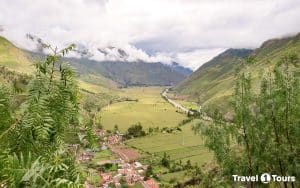
This is a very fertile and mystical inter-Andean valley that is located on the banks of the Urubamba River. It stretches through the districts of Pisac and Ollantaytambo. During the time of the Incas it was prized for its mild climate and for its geographic qualities. It has the same advantages today. It was the bread basket of the Empire. Much of their agricultural production came from the Sacred Valley. Within the Valley you can discover many of Cusco’s spectacular tourist attractions. Pisac, Ollantaytambo, Maras, Moray, and Salineras. Because the Valley is so beautiful, and the weather there is so comfortable, quite a few of the area’s most exclusive hotels are located there.
- Location of Sacred Valley of the Incas: 31 km. from the city of Cusco. It is located in the provinces of Calca and Urubamba.
Lares Valley
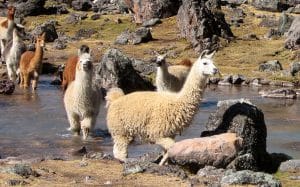
The Valley of Lares is located between the east side of the Andes and the northern section of the Urubamba Range. It is encircled by the steep snow-capped peaks of Verónica, Sawasiray, Pitusiray, and Chicón. It is home to many small traditional communities where the folks still make their living by employing age old, homespun activities like potato farming, weaving, and raising alpacas and llamas. It is a major trekking route because it gives travelers the opportunity to interact with the local people and learn first-hand about their traditions.
- Location of Lares Valley: 148 km. to the northeast of Cusco. It is located in the province of Calca.
Rainbow Mountain (Vinicunca)
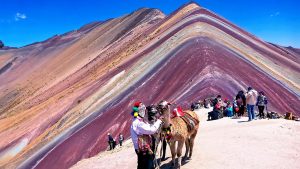
Vinicunca is the Quechua name for this Mountain of Many Colors. It has many of the spectacular colors of the rainbow: red, purple, green, yellow, rose, and many different shades of these colors. It is located in the area of glacier covered Mt. Ausangate (5200 masl.) It is one of the most Popular Places to Visit in the Cusco region. This is because of its enigmatic colors and because it is considered an alternative trekking route of moderate difficulty.
- Location of Rainbow Mountain: 100 km. to the northeast of Cusco. It is located in the district of Pitumarca and in the province of Canchis.
Humantay Lake
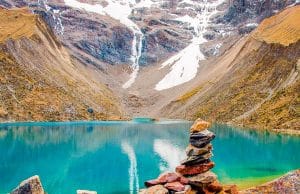
This turquoise mirror of a lake is located up on snow-capped Humantay Mtn. Humantay Lake is located along the Salkantay Machu Picchu Trail. The mystical coloration of its glacial melt-waters, along with its proximity to Mt. Salkantay, have made it a must-see destination for trekkers and for those folks who really want to take care of the environment. The lagoon is surrounded by exotic biodiversity and awesome beauty.
- Location of Humantay Lake: 122 km. to the northeast of Cusco. It is located in the district of Mollepata, and in the province of Anta.
Suykutambo Canyon or the Three-Colored Canyon
This is a regional conservation site. It has an area of 39 485 hectares. It is a curious rock formation at the confluence of three rivers: the Callumani, the Cerritambo, and the Apurimac River. It is an ideal spot where visitors can take part in an adventure sports, and is also a very beautiful natural wonder. Suykutambo is close to the archeological site of Mauk’allaqta and Maria Fortaleza. In addition, this is the natural habitat of the vicuña and the taruka deer, and also of the world’s largest bromeliad, the Puya Raimundi.
- Location of Suykutambo: 260 km. to the southeast of Cusco. It is in the districts of Coporaque and Suykutambo, and in the province of Espinar.
The Circuit of the Four Lakes
This tourist circuit takes in 4 lakes: Pomacanchi, Acopia, Asnaqocha, and Pampamarca or Tungasuca. Each of these watery mirrors is surrounded by beautiful landscape and native flora and fauna. This is an ideal spot to view exotic birds and watch migratory birds like ducks, herons, and seagulls. You can go walking or fishing or try out other water sports. There will be picturesque small towns to visit, and you can immerse yourself in the authentic history of South America by visiting the home of Tupac Amaru II.
- Location of Four Lake Circuit: 97 km. to the southeast of Cusco. The relaxing lakes are in the districts of Pomacanchi, Acopia, Mosoqllaqta, Tungasuca and Pampamarca; and in the provinces of Acomayo and Canas.
Glacier-Covered Mt. Salkantay
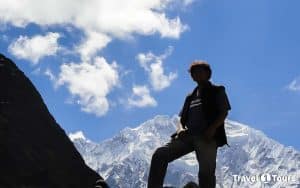
This impressive Apu Salkantay is the second highest peak in the Cusco area. (6271 masl.) It is located in the Vilcanota Range. The Salkantay massif is surrounded by absolutely beautiful scenery, deep canyons, cliffs, lakes, and other snow-capped peaks. One of the valleys running down off Salkantay cuts across the world famous Classic Inca Trail which is traveled everyday by hundreds of adventurers heading to Machu Picchu. From this altitude you will be able to see far out over the Eyebrow of the Jungle.
- Location of Salkantay Mountain: 127 km. to the northeast of Cusco. It is located in the district of Mollepata, and in the province of Anta.
Glacier-Covered Mt. Ausangate
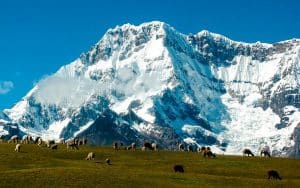
This snow-capped peak is the highest peak in the Cusco region. ( 6384 masl.) It is the 5th highest mountain in Peru. It forms part of the Vilcanota Range. It is surrounded by glaciers, mountains (including colourful Rainbow Mtn.), forests of stones, plateaus, and beautiful lakes like Sibinacocha Lake. It is the preferred destination of trekkers and lovers of adventures and aventure sports.
- Location of Ausangate Mountain: 190 km. to the northeast of Cusco. It is located in the district of Ocongate, and in the province of Quispicanchi.
Manu National Park
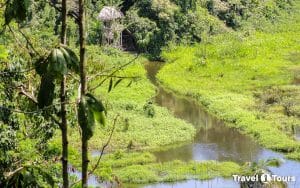
This is a natural protected area that encompasses 1,909,800 hectares. The park was created on May 29, 1973. It is one of the natural treasures of Peru and has been declared part of the Natural Heritage of Humanity by UNESCO. The Manu Biospheric Reserve is an area with one of the highest levels of biodiversity on Earth. (That is both for plants and for animals). Many forms of life here have not yet been catalogued. And besides that, it is one of the most important natural attractions both for nature lovers and eco-tourists. Here is a place where you have the opportunity to observe wildlife in its natural state, and also share experiences with the native people of the Amazon region.
- Location of Manu National Park: 300 km. to the northeast of the city of Cusco. It is between the provinces of Manu and Paucartambo.
The Wetlands of Lucre – Huacarpay
This is a quite a rare high Andean ecosystem formed by lagoons surrounded by abundant wetland vegetation which serves as a refuge and feeding ground for local and migratory birds. It is very valuable ecologically and it is pretty as a picture. Biologists and ecologists love to come here and observe birds which journey here from all different latitudes. Quite close to this site you can climb to the Wari ruins of Pikillaqta.
- Location of Huacarpay: 32 km. to the southeast of Cusco. It is in the district of Lucre, and in the province of Quispicanchis.
Convents and Colonial Churches of Cusco
Another Cusco Tourist Attraction is its great variety of Colonial era convents and churches. Most these were actually constructed upon the walls and foundations of the temples which the Incas had built. You will be surprised by their grandeur and their majesty. The majority of these churches and convents are located in Cusco. Don’t forget to discover these Top Places To Visit in Cusco.
Cusco Cathedral
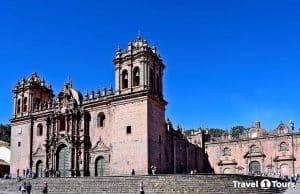
This is the most important present day religious structure in Cusco. Its style is considered Andean Barroque. The interior is decorated with cedar carvings and the altar is plated with gold and silver, as are the choir loft and the pulpit. Upon its walls hangs the most important collection of the Cusco School of Art. Hours when it is open: 10:00 am. until 6:00 pm.
- Location of Cusco Cathedral: on the Plaza de Armas of Cusco.
Church of the Company of Jesus
This church was originally built in 1571. It is constructed on the walls of the old Amarucancha which was the palace of Inca Huayna Cápac. After the earthquake of 1650 the church underwent reconstruction until 1688. The design and the façade are examples of Andean Barroque style. The façade, which is said to be altarpiece style, is decorated with medium size towers and the stones have been curiously worked. As you enter the church you will see the three-bodied main altar and the Salomonic columns. The pulpit is made of wood. There are Barroque paintings covering the wall behind the altar. The finest painting is the one of ¨The Wedding of Martín García de Loyola to Beatriz Clara Coya”.
- Location of The Church of the Company of Jesus: Plaza de Armas.
- Hours when it is open: 9:00 am – 12 noon. And 1:00 pm – 5:30 pm.
Church and Convent of La Merced
This church is also Barroque style. The church possesses the second largest gold monstrance in the world. It measures 1.3 meters and it weighs 22 kilos. It is decorated with precious stones and on top there is a giant pearl specially carved into the form of a siren.
- Location of the Church and Convent of La Merced: Calle Mantas.
- Hours when it is open: Monday through Saturday from 8:00 – 12 noon. And from 2:00 pm- 5:00 pm.
The Church and Convent of Saint Francis of Assisi
This colonial edifice has three naves set at different levels. It is built out of rocks, pebbles, and lime. It has one basilica and one tower. It is laid out in the form of a Latin cross. The facade has a large door in the form of an arch. The convent is now a museum which exhibits 429 works of art. Discover among them paintings, sculptures, altarpieces, and furniture. There is also a large library with books in 5 languages. Go exploring the various catacombs, too.
- Location Church and Convent of Saint Francis of Assisi: Plaza San Francisco.
- Hours when it is open: 8:00 am until 6:00 pm.
The Church and Convent of Santo Domingo (Qorikancha)
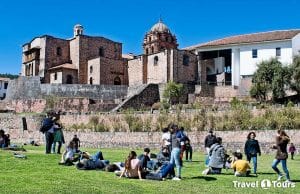
This Colonial church and convent were built on top of the Incan Temple of the Qorikancha. The Qorikancha was the most sacred religious site in the Incan Empire. It is surrounded by beautiful gardens. In the interior of the church you can see some of the finest examples of Incan architecture, images of Andean vision of the cosmos, and a selection of oil paintings from the Cusco School that date back to the17th and 18th centuries.
- Location of The Church and Convent of Santo Domingo: Plazoleta Intipampa which is 2 blocks from the Plaza de Armas.
- Hours when it is open: Monday- Saturday from 8:30 am until 5:30 pm. And Sunday from 2:00 pm until 5:00 pm.
The Church and Convent of Santa Catalina
This is a Colonial construction which was built around the year 1605. It was built upon the old acllahuasi which was the Incan House of the Chosen Women. It is Renaisance style with Roman arches. Inside you can see one of the most complete collections of colonial art in the city of Cusco. On exhibit are paintings from the Cusco School, sculptures, gold and silverwork, textiles, altarpieces, and painted murals.
- Location of The Church and Convent of Santa Catalina: Calle Santa Catalina Angosta, about half a block from the main square (Plaza de Armas).
- Hours when it is open: Monday to Saturday from 8:30 am until 5:30 pm and Sunday from 2:00 pm until 5:00 pm.
Colonial Church at Andahuaylillas
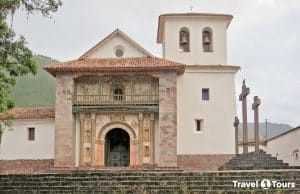
This is one of those surprising examples of both beautiful and popular Andean religious art. The church is better known as the Sistine Chapel of the Americas. There are murals and paintings and silver plated frames. There is a gold plated altar. Construction began in the 17th century. Inside the church there is a wonderful collection of paintings from the Cusco School of Artists that were never before seen. The old organ is amazing. There is gold work and silver work that you will marvel at. The altar itself is Barroque style.
- Location of The Colonial Church of Andahuaylillas: Located on the Plaza de Armas, in the town of Andahuaylillas.
- Hours that it is open: 8:00 am until 4:00 pm every day.
San Blas Church
This is a Colonial era church that is located in the most famous neighborhood in Cusco, the San Blas neighborhood. It was built around 1560 upon an Incan temple dedicated to thunder and lightning. This is the oldest parish in Cusco. It is famous for its intricately carved wooden pulpit.
- Location of San Blas Church: in Plaza San Blas which is 3 blocks from the Plaza de Armas of Cusco.
- Hours when it is open: 8:00 am until 6:00 pm except Sunday.
The City of Cusco has other wonderful churches. You can check out and explore the Temple of Belén, the Temple of San Pedro, the Temple of San Cristóbal, the Temple of Santa Ana, the Temple of San Sebastián, and the Temple of San Jerónimo.
Cusco Museums
Cusco is a great place for lovers of Andean culture. Cusco has 10 museums that show beautiful representations of pre- Incan work, art from the great Incan culture, and also art from the Colonial and Republican periods. Exlpore Cusco and discover the Best Museums in Cusco!
Most of these museums are located in the center of the city. They are:
Inka Museum
This museum is part of the University of San Antonio Abad del Cusco. It used to be called the Archeological Museum. It is located in an old colonial house that was built upon an Incan palace. It contains a great collection of art from Andean cultures.
- Hours when it is open: Monday to Friday from 8:00 am until 6:00 pm. and Saturday from 8:00 am. until 4:00 pm.
- Address of The Inka Museum: Calle Ataud 154
Museum of Pre-Columbian Art
There are 10 separate exhibition salons. They show the very best in pre-Columbian art. They show major alternative exhibitions in wood, bone, shell, gold and silver. You will see examples from the pre-Incan Nazca, Mochica, Wari, and Chimú cultures and from the Incas, too.
- Hours when it is open: 9:00 am to 10:00 pm.
- Location of Pre-Columbian Art Museum: Plaza Nazarenas 231
Museum of Religious Art
Inside these finely built walls (you can see the 12 Angled Stone on the outside) there is large collection of religious paintings from the Colonial era. After checking out the exterior of the museum, in the interior you can admire the ceiling made out of cedar. The settings are Moorish style and the windows are made of exquisite colonial-era glass.
- Hours when it is open: 8:00 am – 6:00 pm. Everyday.
- Location of the Museum of Religious Art: Herrajes 38.
Regional Historical Museum
It is located in the house of the Chronicler, Inca Garcilaso de la Vega. It offers one of the most complete collections of both Incan and pre-Incan archeological pieces. There is a great collection of paintings from the colonial era, and also other artifacts from the colonial era, the Republican era, and from the contemporary era. You can also see the legacy of Inca Garcilaso de la Vega.
- Hours when it is open: 8:00 am. until 6:00 pm.
- Location of the Regional Historical Museum: Calle Heladeros
The On-site Museum of the Qorikancha
There are five exhibition salons where historical ancestral Andean art is shown, both Incan and pre-Incan. The majority of the work exhibited (metal objects, lithic pieces, ceramics, textiles, sculptures, paintings, and musical instruments) was found during excavations made in the Incan temple, the Qorikancha.
- Hours when it is open: 8:30 am. until 5:30 pm. except Sunday.
- Location of the Coricancha Museum: On the 3rd block of Ave. El Sol, in front of the Qorikancha.
Museum of Contemporary Art
This museum is located within the Municipal Palace. There are 2 permanent exhibition rooms and 1 temporary room. The museum shows contemporary art. There are more than 280 pieces by famous local, national, and international artists.
- Hours when it is open: 9:00 am. until 6:00 pm. except Sunday.
- Location of the Museum of Contemporary Art: Portal Espinar 270
Museum of Popular Art
This is the Museum of the American Institute of Art. The museum exhibits the best of Cusco’s popular art. Most of the pieces were acquired at the traditional Christmas Fair, Santurantikuy. Within the galeries you can see works by recognized Cusco masters such as: Hilario Mendívil, Nemesio Villasante, Luis Acosta and other great contemporary artists from the Cusco area.
- Hours when it is open: 8:00 am. until 6:00 pm.
- Location of the Museum of Popular Art: Ave. El Sol
Machu Picchu On-site Museum
This museum is also known as the Manuel Chávez Ballón Museum. It is located at the foot of the Incan Citadel of Machu Picchu. It has archeological remains and also features a multi-media exposition of excavations made at Machu Picchu. And there is an exquisite botanical garden which has the plants that are native to the Historical Sanctuary of Machu Picchu.
- Hours when it is open: 10:00 am. until 4:00 pm.
- Location of the Manuel Chávez Ballón Museum: by Puente Ruinas, at the foot of the Citadel of Machu Picchu.
Casa Concha Museum
This museum is situated in a large colonial mansion which belongs to the University of San Antonio Abad in Cusco. It presents the findings of Hiram Bingham when he first visited Machu Picchu. (There are 360 pieces which were returned to Peru by Yale University in the USA) There are photos and videos of other archeological excavations; and there are pieces (bones, metal fragments, ceramics, etc.), that were found during the restoration and the excavation of the interior of Casa Concha.
- Hours when it is open: 9:00 am. until 5:00 pm.
- Location of the Casa Concha Museum: Calle Santa Catalina Ancha
Santa Catalina Museum
It is located in the House of the Chosen Women (The Akllawasi). These were women in Incan times whose lives were dedicated to the Sun God. Today this site is called the Monastery of Santa Catalina. Within the museum you can see: the interior of the Santa Catalina cloisters, the work room, the founder’s cell, the study room, the dining room, the room for reflection, the room for adoration, and other sectors. This is also one the premier sites for viewing the work of the Cusco School of Artists.
- Hours when it is open: 9 am. until 5 pm.
- Location of the Santa Catalina Museum: Calle Santa Catalina Angosta 401
Incan Palaces
- Qollqanpata
- Qasana
- Qoraqora
- Kiswar Kancha
- Hatunrumiyoq
- Hatun Kancha
- Pukamarka
- Amaru Kancha
Colonial Houses
- Palace of the Archbishop.
- Palace of the Admiral.
- Cabrera House o Casa Cabrera
- Casa Del Inca Garcilaso De La Vega.
- Marques De Valleumbroso house.
- Casa De Los Cuatro Bustos.
- Marques De Picoaga House.
Medicinal Hot Springs
- Cocalmayo
- Lares
- La Raya
Traditional towns
- Maras
- Chinchero
- Ollantaytambo
- Pisac
- Paucartambo
Look-out points
- Cristo Blanco
- San Cristóbal
- Santa Ana
- Inca Pachacuteq Monument
Cusco is not only monuments, archeological complexes, natural attractions and traditional villages. For sure, Cusco is much more than that. In fact, in Cusco you will discover amazing traditions, living culture, fascinating history, fine food, colorful festivals, handmade crafts, baby alpaca weavings, and incredible scenery.
Would you like to have the most unforgettable experience of your life in this magical Land of the Incas? Book one of our best exclusive Cusco Packages and explore the world’s most fantastic places to visit in Cusco.